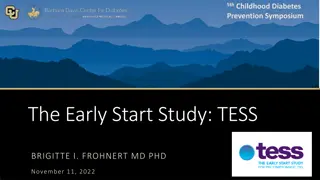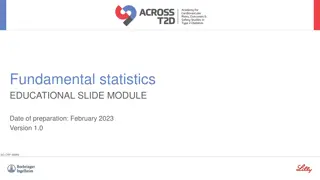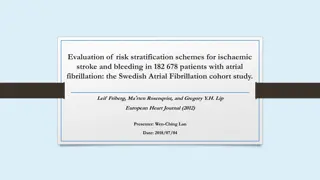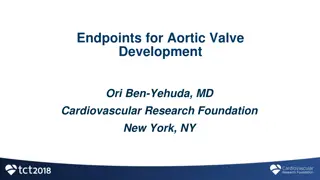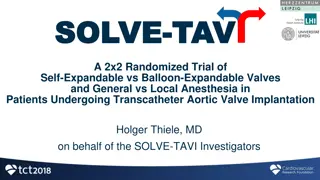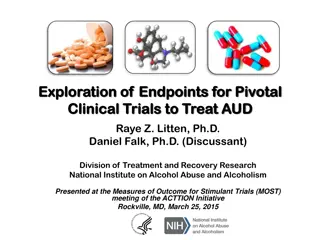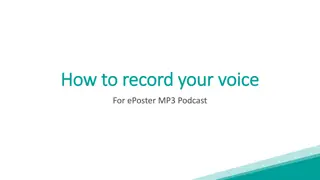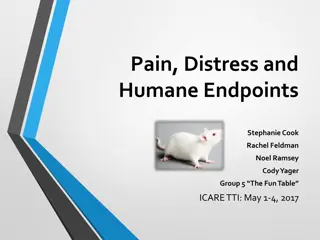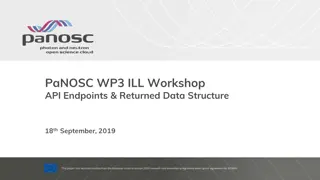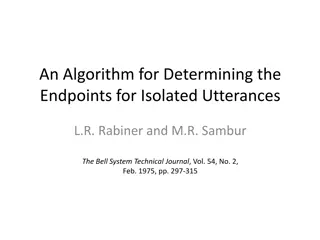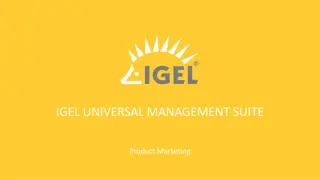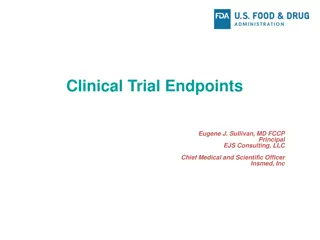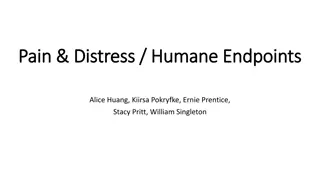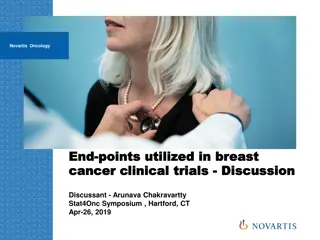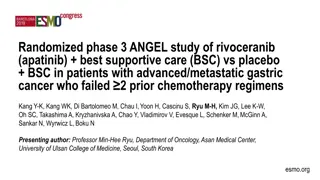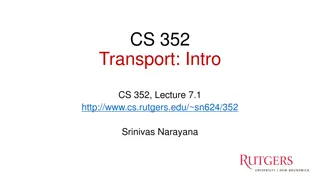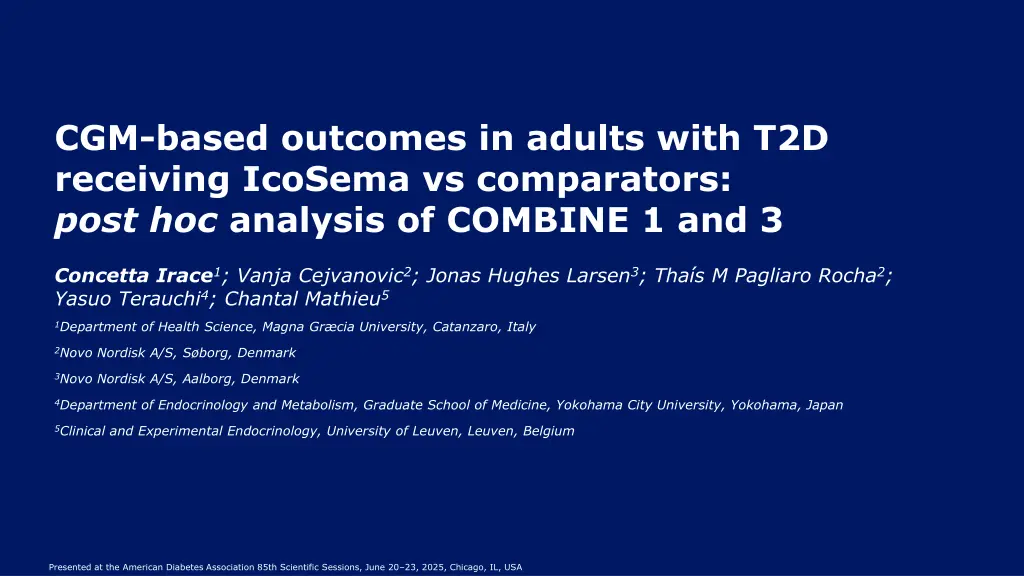
CGM-based Outcomes in Adults with T2D Receiving IcoSema vs Comparators: Post-hoc Analysis
Explore the CGM-based outcomes in adults with Type 2 Diabetes receiving IcoSema compared to other treatments, as discussed in the COMBINE 1 and 3 studies. This post-hoc analysis delves into the efficacy and safety of IcoSema in individuals with inadequately controlled T2D, revealing statistically significant improvements in key parameters.
Download Presentation

Please find below an Image/Link to download the presentation.
The content on the website is provided AS IS for your information and personal use only. It may not be sold, licensed, or shared on other websites without obtaining consent from the author. If you encounter any issues during the download, it is possible that the publisher has removed the file from their server.
You are allowed to download the files provided on this website for personal or commercial use, subject to the condition that they are used lawfully. All files are the property of their respective owners.
The content on the website is provided AS IS for your information and personal use only. It may not be sold, licensed, or shared on other websites without obtaining consent from the author.
E N D
Presentation Transcript
CGM-based outcomes in adults with T2D receiving IcoSema vs comparators: post hoc analysis of COMBINE 1 and 3 Concetta Irace1; Vanja Cejvanovic2; Jonas Hughes Larsen3; Tha s M Pagliaro Rocha2; Yasuo Terauchi4; Chantal Mathieu5 1Department of Health Science, Magna Gr cia University, Catanzaro, Italy 2Novo Nordisk A/S, S borg, Denmark 3Novo Nordisk A/S, Aalborg, Denmark 4Department of Endocrinology and Metabolism, Graduate School of Medicine, Yokohama City University, Yokohama, Japan 5Clinical and Experimental Endocrinology, University of Leuven, Leuven, Belgium Presented at the American Diabetes Association 85th Scientific Sessions, June 20 23, 2025, Chicago, IL, USA
Disclosures and acknowledgments CI has provided advisory board services for Abbott, Ascensia, Menarini, Novo Nordisk, Roche Diabetes Care Italy and Senseonics; and has received speaker fees from Abbott, Ascensia, Boehringer Ingelheim, Eli Lilly and Novo Nordisk VC, JHL and TMPR are employees of Novo Nordisk and hold stock in Novo Nordisk YT has received consulting/lecture fees from Astellas Pharma, AstraZeneca, Eli Lilly Japan, Kowa Company, Mitsubishi Tanabe Pharma, Merck Sharp & Dohme, Nippon Boehringer Ingelheim, Novo Nordisk, Sanofi and Sumitomo Pharma; and grants from Nippon Boehringer Ingelheim and Sumitomo Pharma CM serves or has served on advisory panels for Abbott, Bayer, Biomea Fusion, Boehringer Ingelheim, Eli Lilly, Insulet, Medtronic, Novartis, Novo Nordisk, Roche, SAB Bio, Sanofi and Vertex. Financial compensation for these activities has been received by KU Leuven. KU Leuven has received research support for CM from ActoBio Therapeutics, Medtronic, Novo Nordisk and Sanofi. CM serves or has served on speaker bureaus for Abbott, Dexcom, Eli Lilly, Medtronic, Novo Nordisk, Roche, Sanofi and Vertex. Financial compensation for these activities has been received by KU Leuven. CM is president of the European Association for the Study of Diabetes (EASD; all external support from EASD is to be found at www.easd.org) and vice-president of the European Diabetes Forum This study was funded by Novo Nordisk A/S. The COMBINE 1 and COMBINE 3 trials were sponsored by Novo Nordisk and are registered with ClinicalTrials.gov (NCT05352815; NCT05013229) Medical writing support was provided by Erin Aldera PhD of Oxford PharmaGenesis, Oxford, UK, with funding from Novo Nordisk Presented at the American Diabetes Association 85th Scientific Sessions, June 20 23, 2025, Chicago, IL, USA
Background IcoSema (a once-weekly combination therapy of basal insulin icodec and semaglutide [a GLP-1 analog]) has been investigated in the global phase 3a COMBINE clinical development program1 3 COMBINE 1 and 3 evaluated the efficacy and safety of IcoSema versus basal insulin or BBT (insulin glargine U100 + 2 4 injections of insulin aspart) in individuals with inadequately controlled T2D treated with basal insulin1,3 During the last 4 weeks of treatment, statistically significant improvements in TIR (70 180 mg/dL) and TAR (>180 mg/dL) for IcoSema versus icodec were found in COMBINE 1; TIR and TAR were similar for IcoSema and daily BBT in COMBINE 3. TBR (<54 mg/dL) was similar for IcoSema and icodec, but statistically significantly lower with IcoSema than with daily BBT1,3 Aim: this post hoc analysis of COMBINE 1 and 3 was carried out to further evaluate CGM-based outcomes with IcoSema versus comparators in adults with T2D BBT, basal-bolus therapy; CGM, continuous glucose monitoring; glargine U100, insulin glargine U100; GLP-1, glucagon-like peptide-1; icodec, insulin icodec; T2D, type 2 diabetes; TAR, time above range; TBR, time below range; TIR, time in range 1. Mathieu C et al. Lancet D&E 2025; doi:10.1016/S2213-8587(25)00096-8; 2. Lingvay I et al. Diabetologia 2025;68:739 51; 3. Billings LK et al. Lancet D&E 2025; doi:10.1016/S2213-8587(25)00052-X Presented at the American Diabetes Association 85th Scientific Sessions, June 20 23, 2025, Chicago, IL, USA
Trial design COMBINE 1 and 3 were randomized, multinational, open-label, treat-to-target phase 3a trials, each comprising a 2-week screening period, a 52-week treatment period and a 5-week follow-up period1,2 Adults ( 18 years of age) with inadequately controlled T2D (A1C 7.0 10.0%) treated with basal insulin (with or without oral glucose-lowering treatments) were eligible Participants were randomized 1:1 to once-weekly IcoSema or once-weekly icodec in COMBINE 1 and once-weekly IcoSema or daily BBT in COMBINE 3 Participants in both trials wore a CGM device (Dexcom G6) during the last 4 weeks of treatment (weeks 48 to 52) CGM data were blinded to both participants and investigators A1C, glycated hemoglobin; BBT, basal-bolus therapy (insulin glargine U100 + insulin aspart); CGM, continuous glucose monitoring; glargine U100, insulin glargine U100; icodec, insulin icodec; T2D, type 2 diabetes 1. Mathieu C et al. Lancet D&E 2025; doi:10.1016/S2213-8587(25)00096-8; 2. Billings LK et al. Lancet D&E 2025; doi:10.1016/S2213-8587(25)00052-X Presented at the American Diabetes Association 85th Scientific Sessions, June 20 23, 2025, Chicago, IL, USA
Post hoc analysis CGM data were analyzed to assess the following outcomes from weeks 48 to 52: TiTR (70 140 mg/dL) achievement of the triple composite CGM target (>70% TIR70 180 mg/dL, <25% TAR>180 mg/dL and <4% TBR<70 mg/dL) glycemic variability (geometric mean of the CV%) median duration of CGM-derived overall hypoglycemic episodes (sensor glucose level <70 mg/dL for 15 consecutive minutes; ending when sensor glucose returned to 70 mg/dL for 15 minutes) CGM, continuous glucose monitoring; CV%, coefficient of variation; TAR, time above range; TBR, time below range; TIR, time in range; TiTR, time in tight range Presented at the American Diabetes Association 85th Scientific Sessions, June 20 23, 2025, Chicago, IL, USA
CGM-based metrics from week 48 to 52 The mean percentage of TiTR was statistically significantly higher with IcoSema than with icodec (p<0.0001) in COMBINE 1, and similar for IcoSema and BBT (p=0.8912) in COMBINE 3 All data, except for statistical analyses, are observed values. Data are from the on-treatment period (the period in which a participant is considered exposed to randomized treatment). Bold values indicate statistical significance. The percentage of time is defined as 100 times the number of recorded measurements in a given range, divided by the total number of recorded measurements. TAR and TBR were analyzed using a negative binomial regression model (log link) on the number of recorded measurements above or below range with the logarithm of the total number of recorded measurements as offset, and with randomized treatment and region as fixed factors. TiTR and TIR were evaluated using an analysis of variance model with region and randomized treatment as fixed factors, with missing values imputed using multiple imputation. Each imputed dataset was analyzed separately, and estimates were combined using Rubin s rules BBT, basal-bolus therapy (insulin glargine U100 + insulin aspart); CGM, continuous glucose monitoring; CI, confidence interval; ETD, estimated treatment difference; ETR, estimated treatment ratio; icodec, insulin icodec; TAR, time above range; TBR, time below range; TIR, time in range; TiTR, time in tight range Presented at the American Diabetes Association 85th Scientific Sessions, June 20 23, 2025, Chicago, IL, USA
Achievement of the triple composite CGM target from week 48 to 52 The odds of achieving the triple composite CGM target (>70% TIR70 180 mg/dL, <25% TAR>180 mg/dL and <4% TBR<70 mg/dL) were statistically significantly higher with IcoSema than with icodec (p<0.0001) or BBT (p=0.0031) All data, except for statistical analyses, are observed values. Data are from the on-treatment period (the period in which a participant is considered exposed to randomized treatment). Bold values indicate a statistically significant difference in favor of IcoSema. The binary response was analyzed using a binary logistic regression model (logit link) with treatment and region as fixed factors, with missing values imputed by multiple imputation. Each imputed dataset was analyzed separately, and estimates were combined using Rubin s rules BBT, basal-bolus therapy (insulin glargine U100 + insulin aspart); CGM, continuous glucose monitoring; CI, confidence interval; icodec, insulin icodec; OR, odds ratio (COMBINE 1: IcoSema/icodec; COMBINE 3: IcoSema/BBT); TAR, time above range; TBR, time below range; TIR, time in range Presented at the American Diabetes Association 85th Scientific Sessions, June 20 23, 2025, Chicago, IL, USA
Glycemic variability from week 48 to 52 Glycemic variabilitya was <36% for both treatment arms in each trial COMBINE 1 COMBINE 3 IcoSema: 27.15% Icodec: 31.96% IcoSema: 27.18% BBT: 31.25% All data are observed values. Data are from the on-treatment period (the period in which a participant is considered exposed to randomized treatment) aGeometric mean of the CV% BBT, basal-bolus therapy (insulin glargine U100 + insulin aspart); CV%, coefficient of variation; icodec, insulin icodec Presented at the American Diabetes Association 85th Scientific Sessions, June 20 23, 2025, Chicago, IL, USA
Duration of CGM-derived hypoglycemia from week 48 to 52 The median duration of CGM-derived overall hypoglycemic episodes was 35 minutes for IcoSema and 40 minutes for icodec in COMBINE 1, and 30 minutes for IcoSema and 40 minutes for BBT in COMBINE 3 All data are observed values. Data are from the on-treatment period (the period in which a participant is considered exposed to randomized treatment). Plots show the median and interquartile range aSensor glucose value <70 mg/dL for 15 minutes with or without sensor glucose value <54 mg/dL for <15 minutes confirmed by CGM; bSensor glucose value <54 mg/dL for 15 minutes confirmed by CGM BBT, basal-bolus therapy (insulin glargine U100 + insulin aspart); CGM, continuous glucose monitoring; icodec, insulin icodec Presented at the American Diabetes Association 85th Scientific Sessions, June 20 23, 2025, Chicago, IL, USA
Conclusions Compared with once-weekly icodec and daily BBT, treatment with IcoSema was associated with improved or equivalent CGM-based glycemic outcomes, as well as numerically lower durations of CGM-derived overall hypoglycemic episodes The findings from this post hoc analysis of COMBINE 1 and 3 support IcoSema as a potential treatment intensification option in T2D BBT, basal-bolus therapy (insulin glargine U100 + insulin aspart); CGM, continuous glucose monitoring; icodec, insulin icodec; T2D, type 2 diabetes Presented at the American Diabetes Association 85th Scientific Sessions, June 20 23, 2025, Chicago, IL, USA

